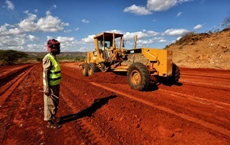Growth widened financial inequality in India, China, says IMF
04 May 2016
The fast-paced growth of the Chinese and Indian economies has only helped to widen financial inequality in India and China, where it is also the highest among Asia Pacific countries, the International Monetary Fund (IMF) has said.
 Growth in Asia and the Pacific is expected to remain strong at 5.3 per cent this year and next, accounting for almost two-thirds of global growth, says a latest study by the IMF.
Growth in Asia and the Pacific is expected to remain strong at 5.3 per cent this year and next, accounting for almost two-thirds of global growth, says a latest study by the IMF.
The rapid growth has helped both China and India to reduce overall poverty level sharply, but this has not been accompanied by a horizontal spread of the benefits of growth, says the report.
''In the past, rapid growth in Asia came with equitable distribution of the gains. But more recently, while the fast-growing Asian economies have lifted millions out of poverty they have been unable to replicate the 'growth with equity' miracle,'' the IMF said.
China, the report says, has managed to increase middle class in urban areas, as did Thailand, while India and Indonesia have failed to lift sizeable portions of their populations toward higher income levels. ''In India, differences between rural and urban areas have increased, and have been accompanied by rising intra-urban inequality,'' it said.
Many factors have been identified as key drivers of the inequality between rural and urban areas in China and India.
China, the report pointed out, has gone through a rapid industrialisation in particular regions and the concentration of foreign direct investment in coastal areas have led to substantial inequalities between coastal and interior regions. Other factors include low educational attainment and low returns to education in rural areas.
In India, however, the interprovincial inequality is lower than in China, and rising inequality in India has been found to be primarily an urban phenomenon.
However, the rural-urban income gap in India has increased. This, according to the Fund, has been due to higher rural inflation and educational attainment over the past two decades.
The two countries have introduced a number of policies to tackle the rising inequality.
China introduced the Minimum Livelihood Guarantee Scheme (Dibao) for social protection in the 1990s. Besides, various social programmes are aiming to expand social safety nets and provide support for the development of rural areas and western regions.
In India, the government introduced the Mahatma Gandhi National Rural Employment Guarantee Act to support rural livelihoods by providing at least 100 days of employment. Programmes to improve education include the National Education Scheme and Midday Meal Scheme.
The Fund lauded the JAM (Jan Dhan-Aadhaar-Mobile) initiative and said, ''The JAM trinity initiative helped India in making substantial advances in financial inclusion. More recently, programmes aiming for universal bank account coverage were launched''.
The report concludes that structural reforms, along with fiscal policy, can help reduce inequality and foster more inclusive growth. Countries will need to address inequality of opportunities, in particular the need to broaden access to education, health, and financial services, as well as tackle labor-market duality and informality.
Reforms should avoid costly, across-the-board subsidy schemes while focusing instead on the expansion of social spending through well-targeted interventions and more-progressive tax codes. Recent reforms, such as the elimination of fuel-price controls in most major economies of the region, bode well for the future.
Growth in Asia and the Pacific is expected to remain strong at 5.3 per cent this year and next, accounting for almost two-thirds of global growth, says the IMF's latest report, Regional Economic Outlook for Asia and the Pacific.
Despite a slight moderation, Asia remains the engine of global growth, according to the While external demand remains sluggish, domestic demand continues to show resilience across most of the region, driven by low unemployment, growth in disposable income, lower commodities prices, and macroeconomic stimulus.
''Of course, Asia is impacted by the still weak global recovery, and by the ongoing and necessary rebalancing in China,'' said Changyong Rhee, director of the Asia and Pacific Department at the IMF.
''But domestic demand has remained remarkably resilient throughout most of the region, supported by rising real incomes, especially in commodity importers, and supportive macroeconomic policies in many countries,'' he added.






















